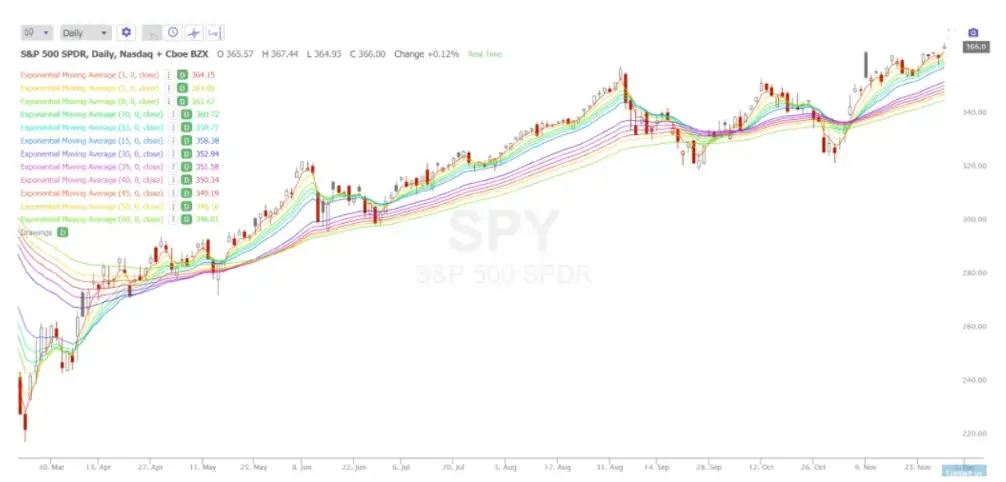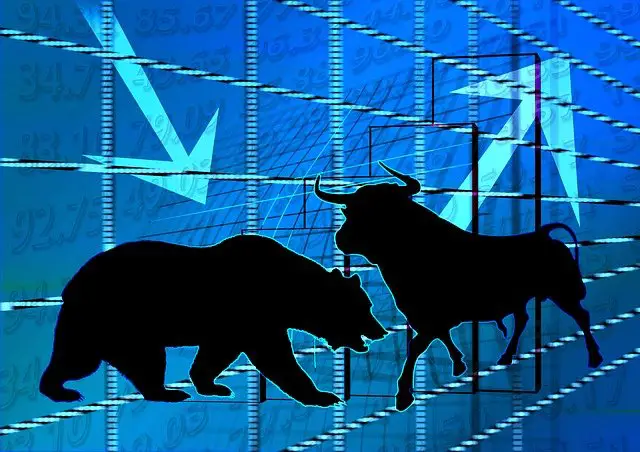GMMA stands for the Guppy Multiple Moving Average and it is a technical trend and momentum indicator. The Guppy Indicator was created by Daryl Guppy, a trader out of Australia. It combines several moving averages in different timeframes to get a perspective of price in relation to the movement of the two different groupings of moving averages.
It uses a group of short-term moving averages and also a group of long-term moving averages as price action trend filters on a chart. Both of the groups are made of six moving averages. The GMMA uses 12 moving averages on a chart at the same time to quantify the trend and momentum based on how the groups relate to each other.
The GMMA is used on a chart showing all twelve moving averages at the same time. They tend to group together showing the short-term trend with the smaller time period moving averages and the long-term trend with the bigger time period moving averages. While both simple moving averages or exponential moving averages can be used the EMA is the most common one used to build this indicator.
The short-term moving averages used on the chart for the GMMA are:
- 3-day moving average
- 5-day moving average
- 8-day moving average
- 10-day moving average
- 12-day moving average
- 15-day moving average
The long-term moving averages used on the chart for the GMMA are:
- 30-day moving average
- 35-day moving average
- 40-day moving average
- 45-day moving average
- 50-day moving average
- 60-day moving average
When the entire group of short-term moving averages breaks above the whole group of longer-term moving averages it is a signal for a potential new uptrend on the chart emerging.
When the entire group of short-term moving averages breaks down and falls below the whole group of longer-term moving averages it is a signal for a potential new downtrend on the chart emerging.
When the two groups of moving averages become separated far from each other it is a sign that the current trend is strongly in place. The short-term group far above the long-term group signals a strong uptrend occuring. The long-term group far above the short-term group signals a strong downtrend is in place.
If the two groups are combined with each other and crossing over each other it is a signal of a price currently inside a trading range and that the previous trend could be reversing in the opposite direction.
The GMMA generally uses the long-term moving averages as the filter for trading direction and the short-term moving averages for the entry and exit signals.
The Guppy Indicator clearly shows the trend direction or lack of trend on a chart through the short-term and long-term moving average visual vertical or horizontal lines.
The GMMA is used to trade trends and swings on charts in the direction of the moving averages momentum.

Chart Courtesy of TrendSpider.com
